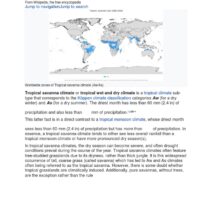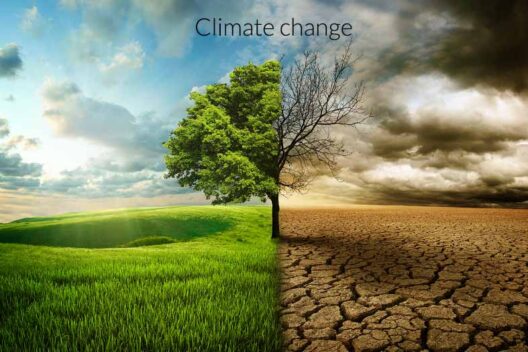Climate change has emerged as one of the paramount challenges of our time, demanding an immediate and concerted response from individuals, communities, and nations. The scientific consensus is clear: human activities, particularly the consumption of fossil fuels and deforestation, are primary drivers of climate change. To slow its progression, several urgent tactics can be employed. Herein, we delineate twelve effective strategies that collectively have the potential to mitigate the impact of climate change.
1. Transition to Renewable Energy
The pivot from fossil fuels to renewable energy sources is indispensable for reducing greenhouse gas emissions. Solar, wind, hydroelectric, and geothermal energies are pivotal alternatives. Investment in these technologies not only curtails reliance on carbon-intensive power generation but also stimulates economic growth through job creation in new energy sectors.
2. Enhance Energy Efficiency
Improving energy efficiency in buildings, transportation, and manufacturing processes can lead to significant reductions in energy consumption. Utilizing energy-efficient appliances and retrofitting buildings with better insulation can lower utility costs while also reducing overall energy demand. Initiatives such as LED lighting and smart thermostats can further enhance efficiency and provide immediate benefits.
3. Reforest and Protect Natural Ecosystems
Forests act as carbon sinks, absorbing significant amounts of CO2 from the atmosphere. Reforestation, afforestation, and the preservation of existing forests should be prioritized. Protecting wetlands, grasslands, and other ecosystems likewise contributes to biodiversity, enhances carbon sequestration, and bolsters resilience against extreme weather.
4. Promote Sustainable Agriculture
The agricultural sector is a notable contributor to greenhouse gas emissions through livestock production and fertilizer use. Embracing sustainable farming practices, such as crop rotation, agroforestry, and organic farming, can reduce emissions. Additionally, promoting plant-based diets and reducing food waste can lead to a significant decline in agricultural emissions.
5. Invest in Carbon Capture and Storage
Carbon capture and storage (CCS) technologies are crucial for mitigating emissions from industrial processes and power generation. By trapping CO2 emissions before they reach the atmosphere, these technologies can play a role in transitioning towards a carbon-neutral future. However, substantial investment and research are essential to enhance the efficacy and scalability of CCS.
6. Electrify Transportation
The transportation sector is one of the largest contributors to carbon emissions. Transitioning from fossil fuel-powered vehicles to electric vehicles (EVs) is a crucial step forward. Additionally, enhancing public transportation systems and encouraging non-motorized transit options like walking and biking can lead to reduced emissions and improved urban air quality.
7. Foster Climate Resiliency
As we work to mitigate climate change, it is equally important to adapt to the changes that are already imminent. Communities need to develop resilience strategies that include improving infrastructure to withstand climate-related events, restoring natural barriers such as mangroves and wetlands, and planning for sustainable urban development practices that take potential climate impacts into account.
8. Support Climate Policy and Advocacy
Effective climate policy at the local, national, and global levels is vital for driving systemic change. Advocating for policies that promote climate action, such as carbon pricing and renewable energy incentives, can galvanize both political will and public support. Individuals can engage with grassroots movements, lobby policymakers, and participate in climate activism to amplify their voices.
9. Engage in Circular Economy Practices
The shift from a linear “take-make-dispose” economy to a circular economy is fundamental in reducing waste and resource consumption. This model promotes recycling, reusing materials, and designing products for longevity. By minimizing waste and maximizing resource efficiency, businesses and individuals alike can contribute to lowering carbon footprints.
10. Opt for Sustainable Consumer Choices
Consumer behavior has a direct impact on climate change. By choosing products with lower carbon footprints, supporting sustainable brands, and reducing single-use plastics, individuals can influence market demand. Engaging in conscious consumerism fosters a culture where sustainable practices are prioritized, resonating throughout the supply chain.
11. Encourage Technological Innovation
Investments in research and development of innovative climate solutions are crucial for combating climate change. Technologies such as advanced battery systems, smart grids, and innovative agricultural practices can significantly enhance sustainability efforts. Collaboration among government, academia, and the private sector is vital to accelerate advancements and deployment of these technologies.
12. Foster Education and Awareness
Education is one of the most powerful tools at our disposal. Raising awareness about climate change, its impacts, and actionable steps individuals can take promotes a more informed populace. Schools, community organizations, and media play essential roles in disseminating knowledge and fostering a culture of sustainability.
The challenge of climate change is daunting, yet it is not insurmountable. By employing these twelve urgent tactics, we can collectively foster a sustainable future. Each action, no matter how small, contributes to a larger paradigm shift required to address this existential crisis. The time to act is now; our planet depends on it.




